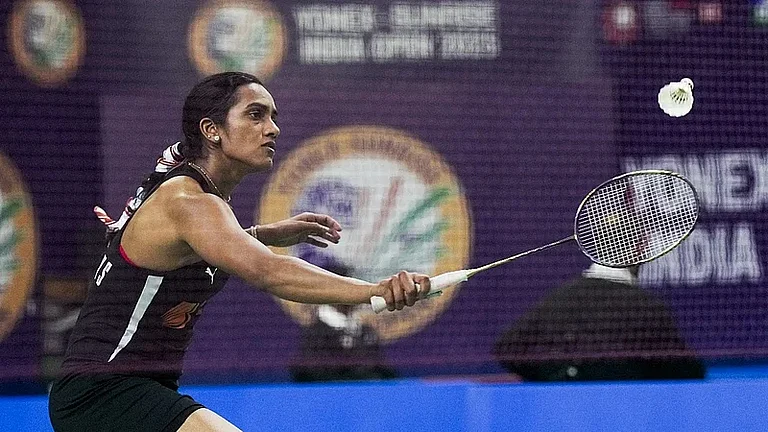After a brief respite, the heatwave is back in the national capital with Delhi sizzling at 40-45 degrees for the sixth consecutive day on Wednesday. The heatwave is likely to continue till Thursday, However, the weather department has predicted rain over the weekend which is expected to bring down the temperature by a few notches. Nevertheless, several parts of Delhi have been experiencing searing heat in the past few days.
Many parts of Delhi had reeled under a punishing heatwave for a fifth consecutive day on Tuesday. Five out of 11 weather stations in Delhi recorded a heatwave on Tuesday. Weather experts have attributed the heatwave spell to the lack of strong western disturbances and incessant hot and dry westerly winds. The maximum temperature was expected to dip slightly on Wednesday but isolated areas may record a heatwave.
At the Safdarjung Observatory, Delhi's base station, the maximum temperature is predicted to settle at 43 degrees Celsius.
Amid the continuing heatwave, the IMD has issued a yellow alert for Delhi and has advised residents to stay indoors.
Here are some tips for surviving the intense heat:
Stay Indoors: During this type of heatwave, try to avoid heat exposure or keep it to a minimum. In case you need to step out, try to avoid being in direct contact of the sun from 11 pm to 2 pm. This is the period when the sun is hottest and can cause intense sunburn and dehydration.
Stay Hydrated: Try to keep cool and avoid dehydration by consuming lots of fluids and foods high in water content such as cucumbers. Drink sufficient water, even if you don’t feel thirsty. When stepping out, remember to carry a bottle of water and keep sipping. For workers exposed to sun for long hours, the US-based OSHA suggests drinking water every 15 minutes is necessary. Try to stick to homemade drinks like lassi, torani (rice water), lemon water, chaach (spiced buttermilk) and other things to stay hydrated instead of sugary drinks. Stock up on ORS, glucose drinks and electrolyte-balancing solutions. However. resist the urge to drink icy cold water immediately after stepping indoors from the sun. Give your body some time to acclimatize to the temperature indoors and cool off a little before drinking water to avoid catching a cold. While it is not strictly dangerous, it is inadvisable.
Check Your Diet: Avoid eating large portions of protein-heavy foods that can increase the metabolic rate of body and cause further internal heat. Avoid drinking caffeinated beverages like coffee, and alcohol as these might increase dehydration. Some studies have shown that spicy foods may in fact cause the body to cool down. It does so by raising the internal temperature of the body to match that of the outside. due to increased blood circulation, the body starts to sweat. Once the sweat evaporates, the body cools down. However, avoid eating junk from unsanitary places. Diarrhoea is a common symptom during the summer months and further adds to the body's dehydration. Severe dehydration can cause blood pressure loss and lead to heat stroke.
Cover up: Ensure using adequate skin protection when doing outdoor work such as wearing full sleeve clothes, and full pants to minimise skin exposure to harmful and harsh rays of the sun during peak hours. Make sure your clothes are loose-fitting and made of breathable materials like cotton. Sunburns can be painful expensive to treat and can cause skin cancer and other kinds of terminal damage in the long run. Sunscreen on face and exposed areas is a must when possible. Use of dupattas, scarves, umbrellas, caps can help.
Know your body: One way to bring down body heat is by cooling down 'hot zones' of the body. These include ankles, back oft he neck, wrists, temples, insides of elbow bends and backside of the knees. Cooling these areas down with cold/wet towels or ice packs can immediately bring down internal heat and may be useful in maintaining a healthy body temperature, especially when exposed to the sun for longer hours.
Look out for heat stress: While most of the effects of heatwave are physical, an increasing number of studies are finding a correlation between bad weather conditions and mental health. Intense heat can cause aggravated tempers and micro-agression, even depression and resurgence of clinical conditions like bipolarity and other mental health diseases. It is important to stay relaxed and calm. While staying hydrated and maintaining a balanced diet go a long way in keeping both mind and body healthy, incorporating exercise into one's daily routine can help alleviate stress. Going out for walks or runs can help reduce heat stress but try to to step out in the morning or evening to avoid the hot sun. In case of increased mental stress, it's advisable to consult a counsellor or mental health professional.
(With inputs from PTI)


























